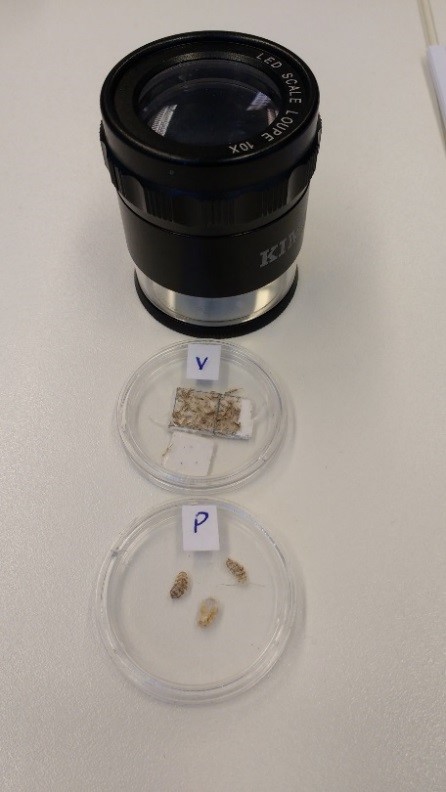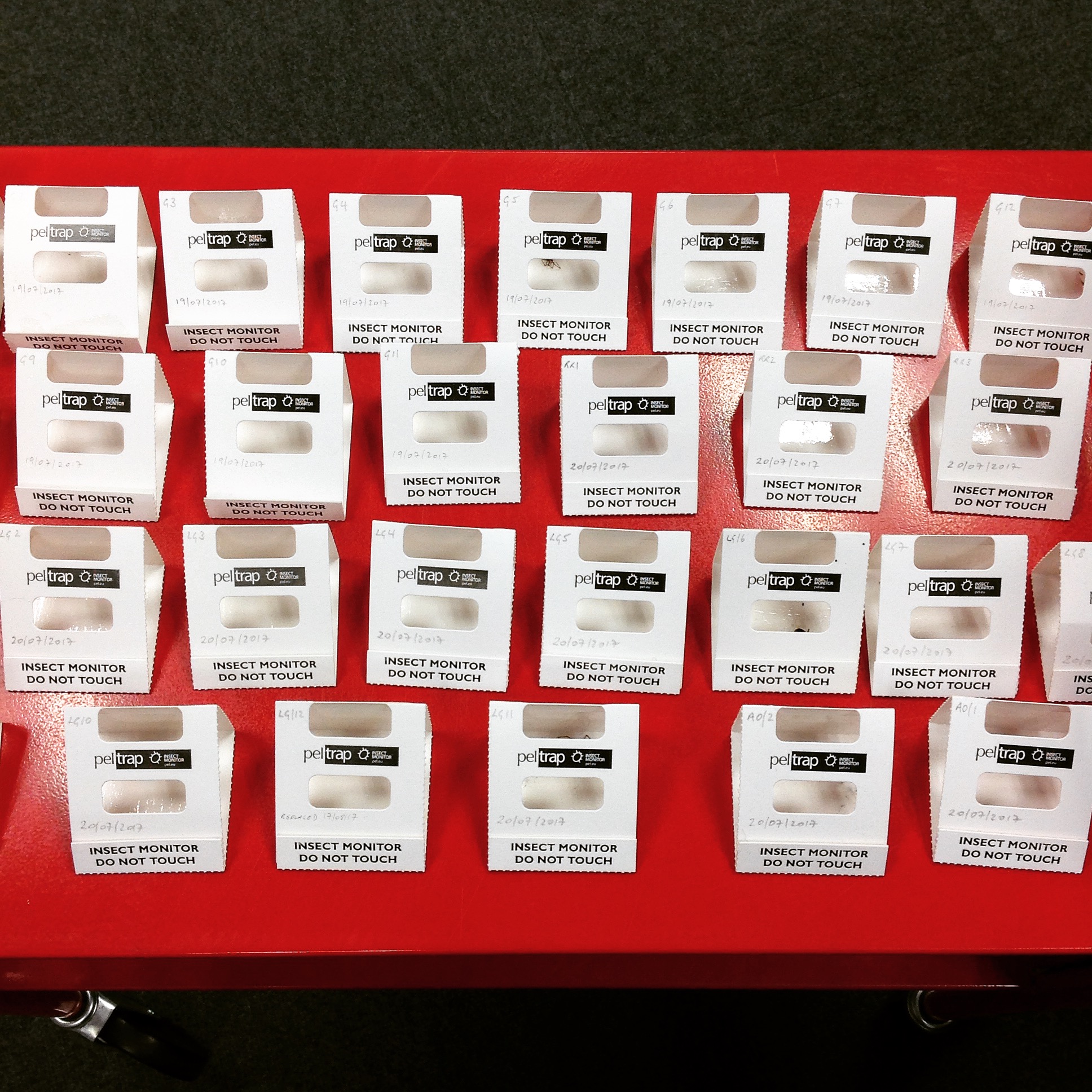Earlier in the year I attended an extremely interesting and informative Integrated Pest Management (IPM) course at the British Museum to learn more about how to monitor and prevent pests in museum and archive collections. The course covered how to identify pest risks, how to monitor rodent and insect activity, pest identification and how to deal with them if you find them. The day ended with a hands on pest identification session which now means I can tell the difference between a springtail and a firebrat!
Over the past few months I have been putting all this training in to action in our Archive stores. Initially a risk assessment of the store areas was conducted, this involved looking for any existing evidence of pest activity and possible points of pest entry. An audit of the collections was also carried out to establish what items might be most at risk. Pests are particularly attracted to materials of animal origin so anything containing fur, skin, feathers or bone can be extremely vulnerable.
The risk assessment enabled me to establish the best placement of our sticky insect monitoring traps so all areas deemed a higher risk were included. The traps have then been visually checked in situ on a monthly basis and after three months all the traps were collected to be checked, logged and any pests identified.
I am pleased to report that so far we have caught very few pests so my new identification skills haven’t been put the test! The next set of traps have been deployed and the monitoring will continue………


